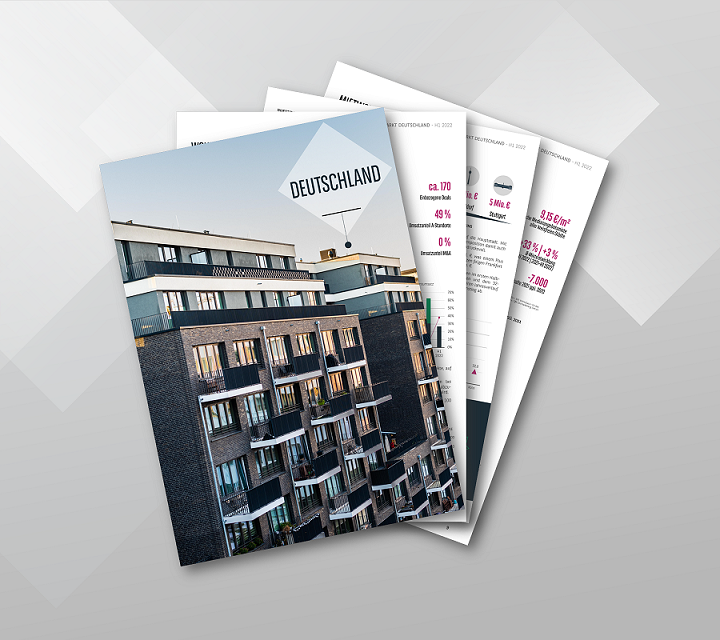Trends and insights of the residential market in Germany
Germany’s population has grown 5% over the past 10 years (2023: 84.7 million). The latest spatial planning forecast (based on the 2022 census) expects population growth to stabilise over the next two decades (2025-2045). Therefore, rent prices are likely to continue their lively growth trajectory against a backdrop of potentially sluggish residential construction activity in the years to come.
Find out more about current (rent) prices in Berlin, Frankfurt, Hamburg and Munich and and the price trend at a district level in our new District Dashboards. Click here for detailed rent and price comparisons:

CONTENTS AT A GLANCE
-
Prologue [»]
-
Residential investment market Germany
-
Rental housing market Germany
-
Market data on major German cities
-
Factsheets on 109 cities
NEW-BUILD RENT PRICES WITH STRONG UPWARD TREND SINCE H1 2025
-
New-build rent prices have been following a particularly steep upward trend over the past 12 months based on a comparison of short-term (vs H1 2024) and long-term (vs 2015) price trends. Although rents in Germany’s top cities have risen roughly 4.4% per year since 2015, they were up an average of 8% compared to H1 2024 alone.
-
This recent above-average performance can be attributed to ongoing excess demand, a slump in completion rates and high construction costs.
-
Hamburg and Düsseldorf posted the steepest rent price increases over the past 12 months, most likely due to the higher supply of high-end residential space that hit the market in the first half of the year. The above-average increase in rent prices in the B-cities surveyed during this period is striking as well. With the exception of Dortmund, Germany’s B-cities saw rents rise between 8% and 10%. Certain catch-up effects are likely to have taken hold here, with initial rent prices comparatively low.

